German Artist Judith Milberg On How Geology Inspires Her Work and Why She Would Invite Hilma af Klint to Dinner
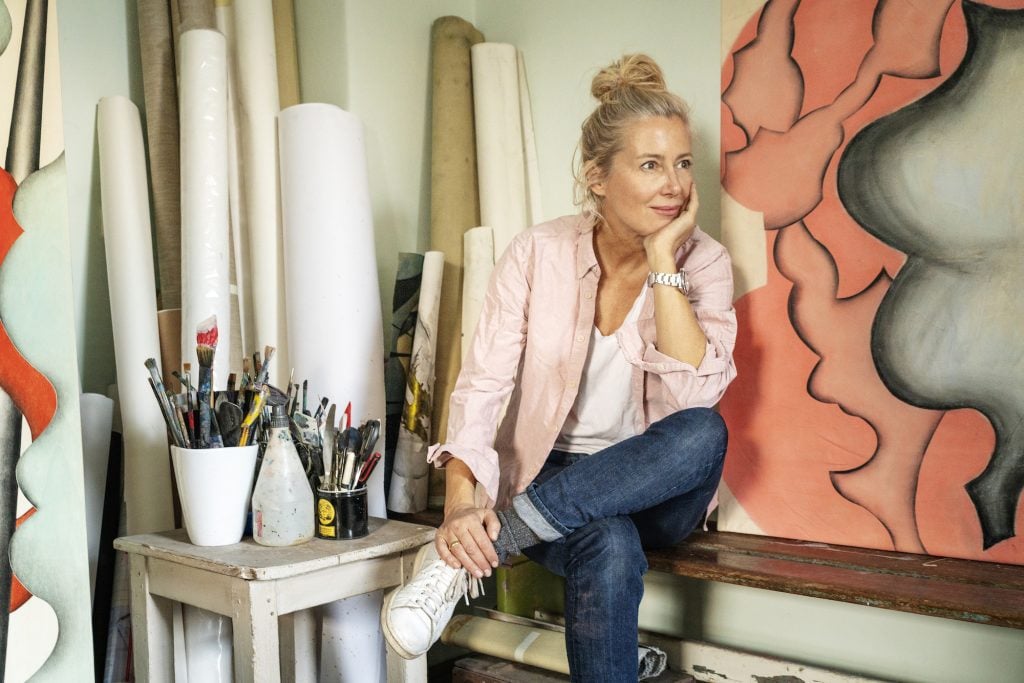

Sophie Neuendorf

Judith Milberg always knew that one day she would be a visual artist, but life initially had other plans. After studying art history, she founded an art management company and worked successfully as a consultant for cultural institutions, companies, and private collections.
Growing up in a family of archaeologists and geologists, she already had a complex view of art and its relationship to science as a child—and those views still inform her work today. Recently I had the pleasure of speaking with Milberg while she was working in her studio preparing for the exhibition “Denkraum Deutschland: Feminin” curated by Miro Craemer at the Pinakothek der Moderne in Munich, which will open this autumn. Without giving too much away, her works for the show will consist of several parts that can be changed and re-hung again and again—this is part of Milberg’s philosophical approach that aims to show we are all parts of a whole and can therefore be seen in different contexts.
Below Milberg shared the childhood experience that still fascinates her and what she feels the role of the artist is in these complex times.
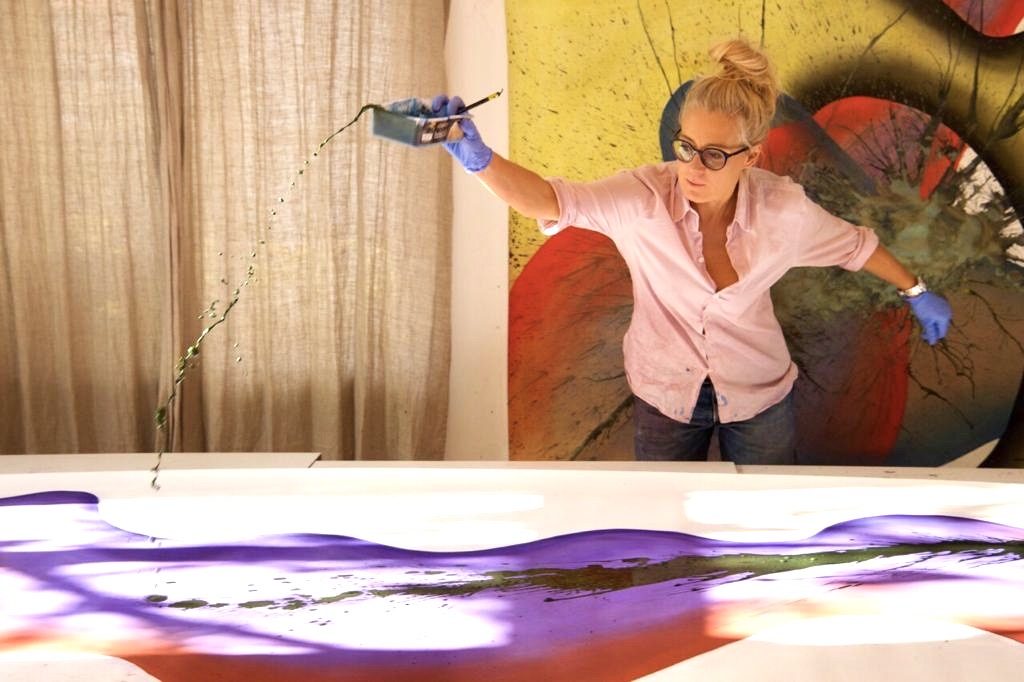
Judith Milberg, 2021. Courtesy of the artist.
Your work is an investigation into the origins of humanity, linked to the philosophical question of being. Why did you decide to pursue this vast idea?
When you climb in the mountains as a child and you are told by your father, a geologist, that these huge mountains are made of shell sediments, it is a formative experience. I realized that an unimaginable number of shells—each one a work of art, a colorful wonder of nature—can together form a mountain. And that is basically the theme of my work. Thinking about the connections between the invisibly small and the unimaginably large. This enigma has never left me.
How has your perception of humanity changed after last year?
Actually, not much has really changed. I also recognize in this pandemic my artistic interest in connections and creative processes: A virus that is imperceptible to the eye dominates the world in a threatening and destructive way. But it also creates new ideas and concepts. We will look back on the past year and perceive it as a tremendous experience in all our lives, I am sure.
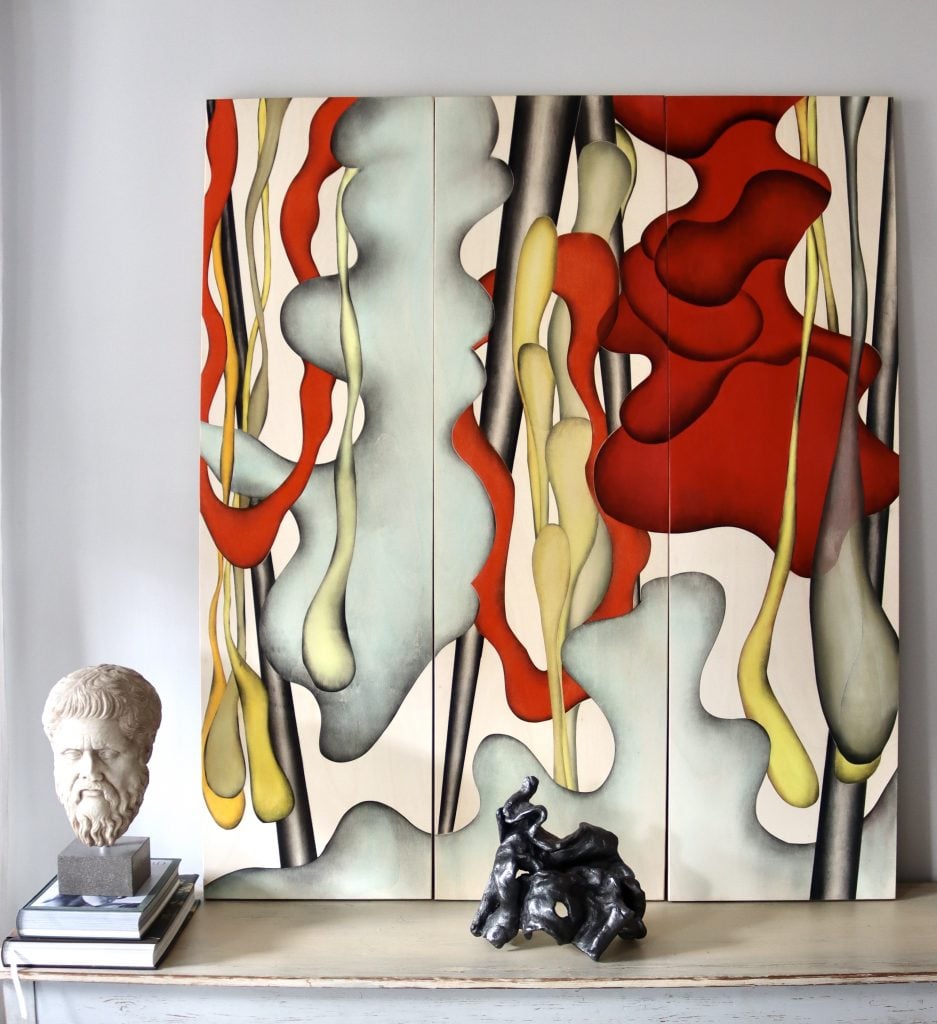
Inside Judith Milberg’s studio with Things Are — Even Without Top or Bottom (2020. Courtesy of the artist.
But do you feel that your work has changed because of the pandemic?
It has really made me rethink and re-appreciate my life and priorities. My work hasn’t changed much though, I’ve always been interested in humanity and how it has changed and adapted to the times by the year millions. On a personal level, I have always spent a lot of time in the studio, and so staying at home was not an effort for me. Quite the opposite. I actually enjoyed it a lot, especially because there is no FOMO.
You have a very unusual technique. How do you work?
I rub many layers of pigments into natural wood panels with an enormous amount of force, but the result ends up resembling powder on a butterfly wing. This technique is physically very demanding. I also work with inks and interference pigments, which I leave to work on the wooden panel. A combination of precision and chance, of concentration and abstraction. It is always the opposing sides that interest me.
What do you think is the role of an artist? Do you feel that you reflect the spirit of the times in your work?
Artists have an important task: they have to make the invisible or the hidden visible. This can be political, philosophical, or sociological. Artists give meaning and relevance to issues that might not otherwise be touched. Personally, I am not political in my work, but I am a political person. The things I portray in my work are more philosophical in nature.
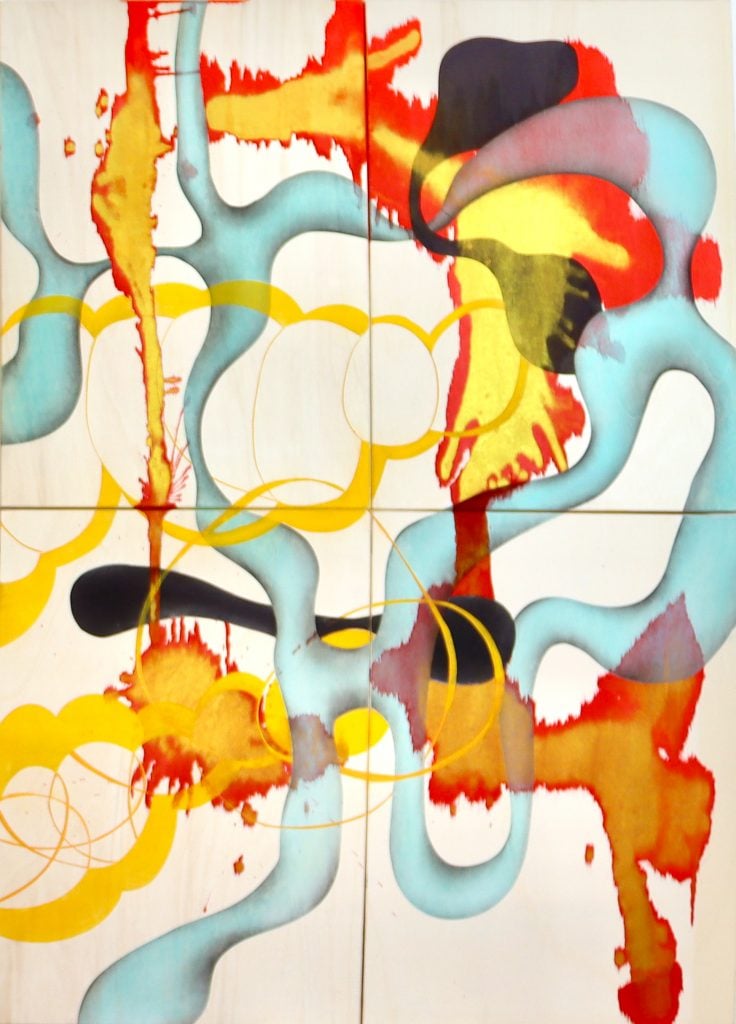
Judith Milberg, Orange Loop II (2020). Courtesy of the artist. . Courtesy of the artist.
If you could have dinner with any three artists, living or dead, who would you choose?
You can ask a lot of questions over dinner. That’s why I would like to talk to three women from the history of art to learn more about their lives in their time.
Artemisia Gentileschi was one of the few women in the Italian Baroque and a trailblazer for many artists. She did not have an easy path in life. And so I would be very interested to hear about her. Secondly, Georgia O’Keeffe with her feminine and radical forms inspire me enormously. And last but not least, Hilma af Klint. Her idiosyncratic inventions of form paved the way for abstraction in art.
Do you think the art industry in Germany has changed a lot in the last year?
Yes, of course, the industry has changed a lot, not only in Germany but all over the world. Everyone is going digital. If you are used to looking at artworks in a museum, you can also learn to enjoy them online, or at least know how to look at them. It is not the same experience as looking at them in person, of course, but it’s much better than not being able to perceive art at all. The fact that you and I can now video chat and I can show you my studio is just great!
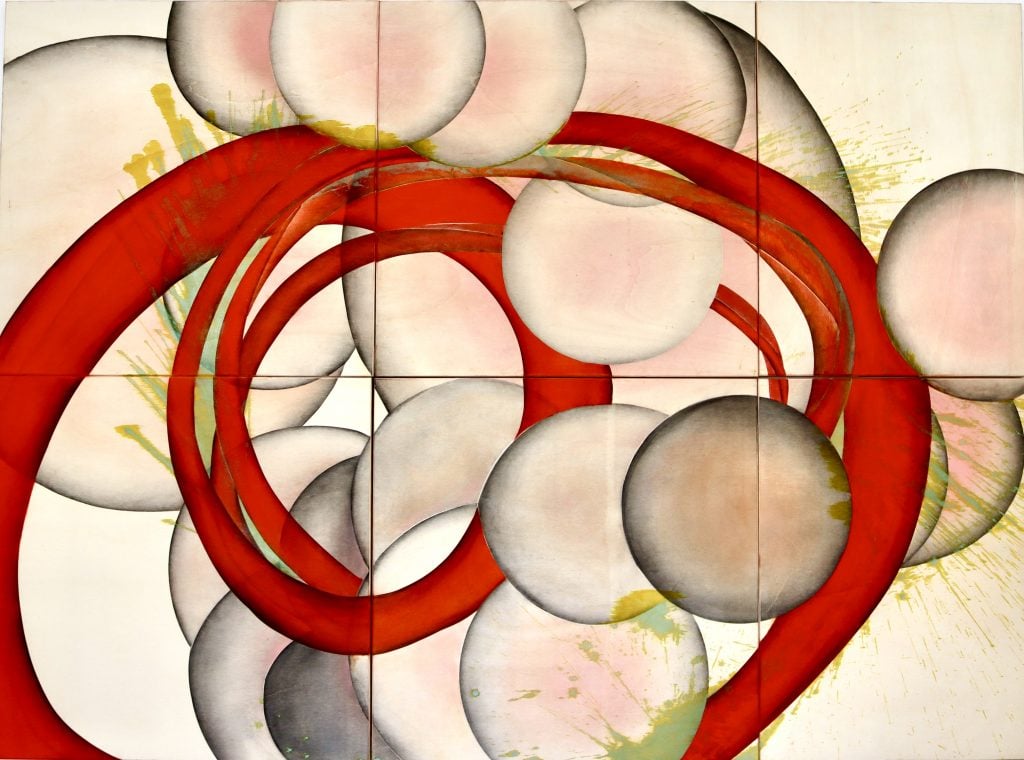
Judith Millberg, Movement of globes (2021). Courtesy of the artist.
What is your opinion on NFTs?
I have been thinking about them a lot in the last few months. It is a paradigm shift that will change the market. It is incredible that you can buy NFTs, but ultimately it will be the effect of blockchain for artists and the resale rights that will have the biggest impact on the market. I personally will offer NFTs as part of my oeuvre and am actually already working on that.
What’s coming up for you this year? The actual situation permitting it, of course!
I am really looking forward to exhibiting at Johann König’s “Messe in St Agnes” this spring! It is a wonderful opportunity to show my work in an extraordinary place. And then, of course, the exhibition at the Pinakothek der Moderne in Munich. I will be showing a large multi-part wall piece where visitors can decide on the composition of the individual panels every day. So, every day there will be a new work on display.